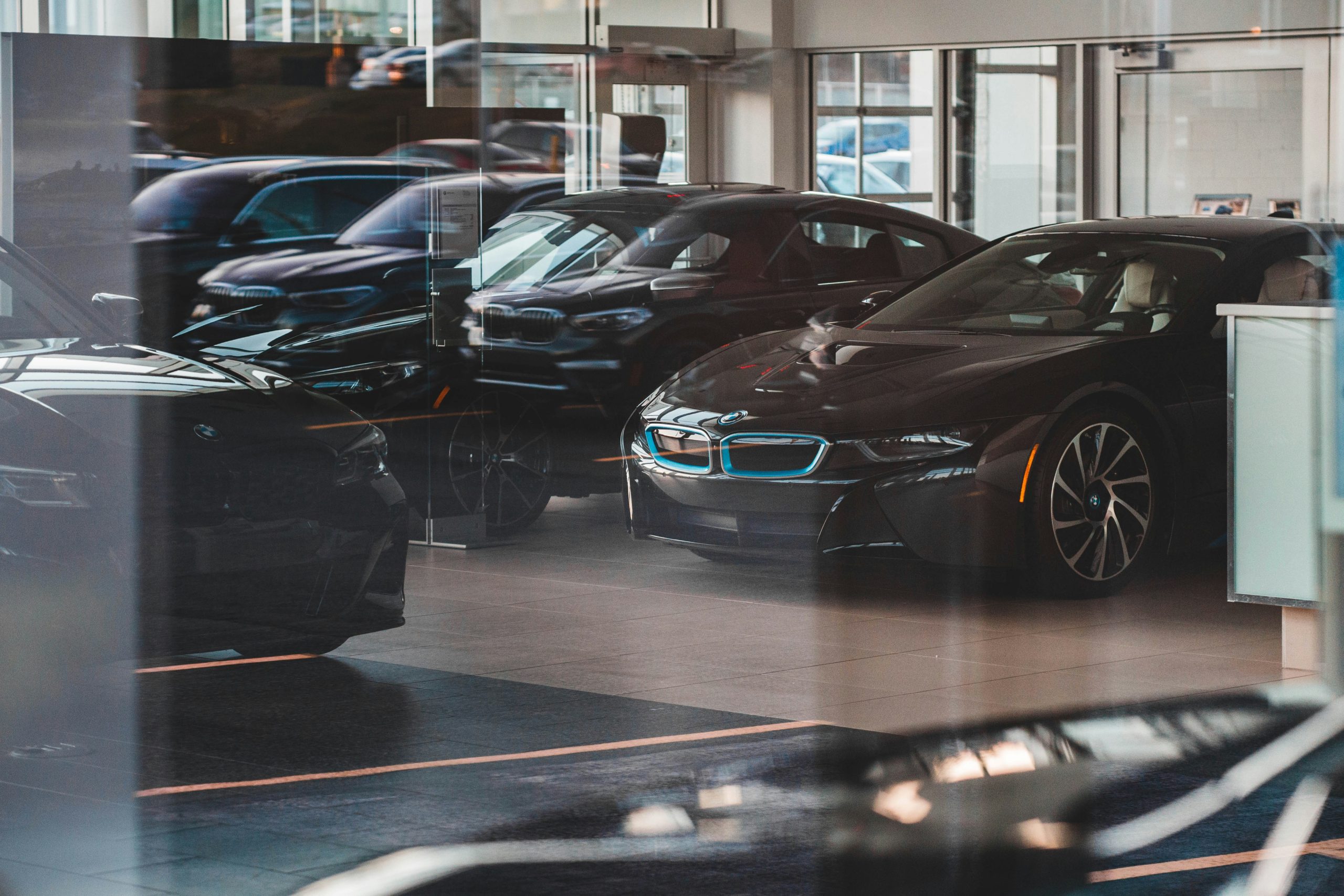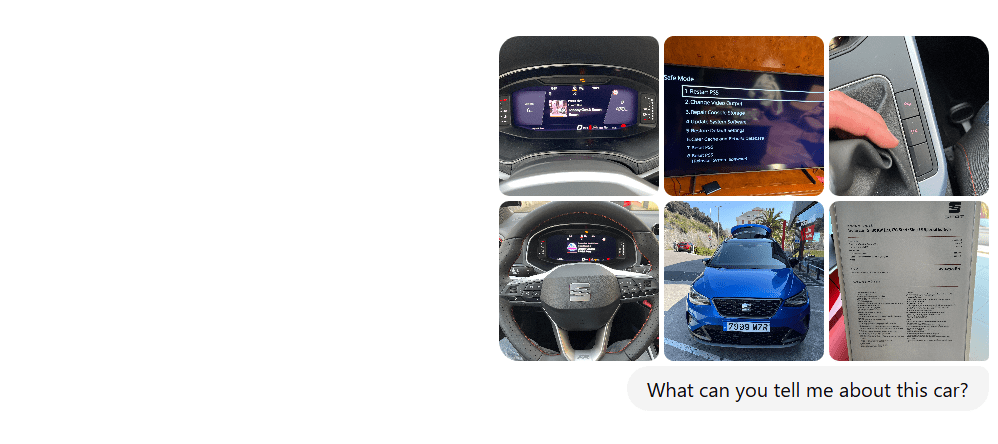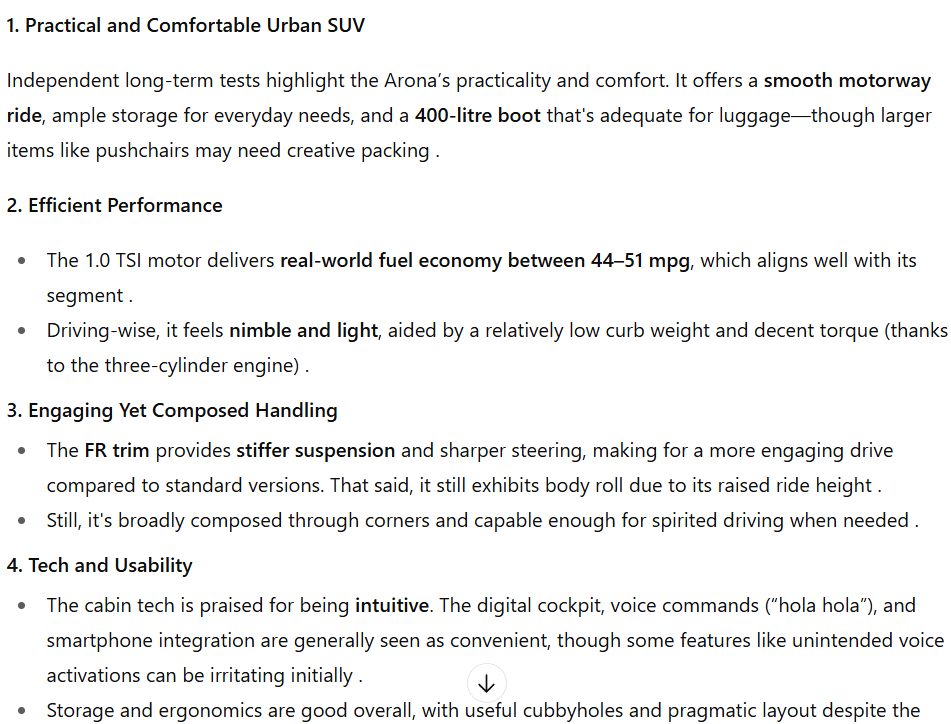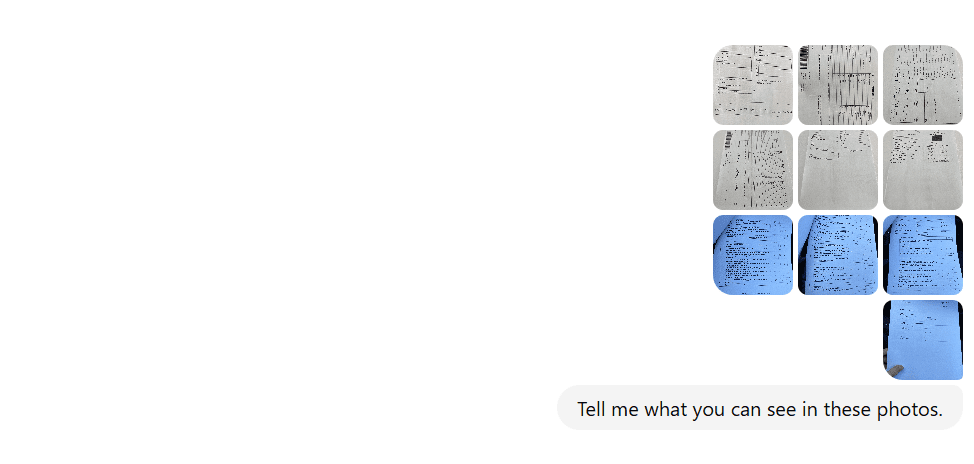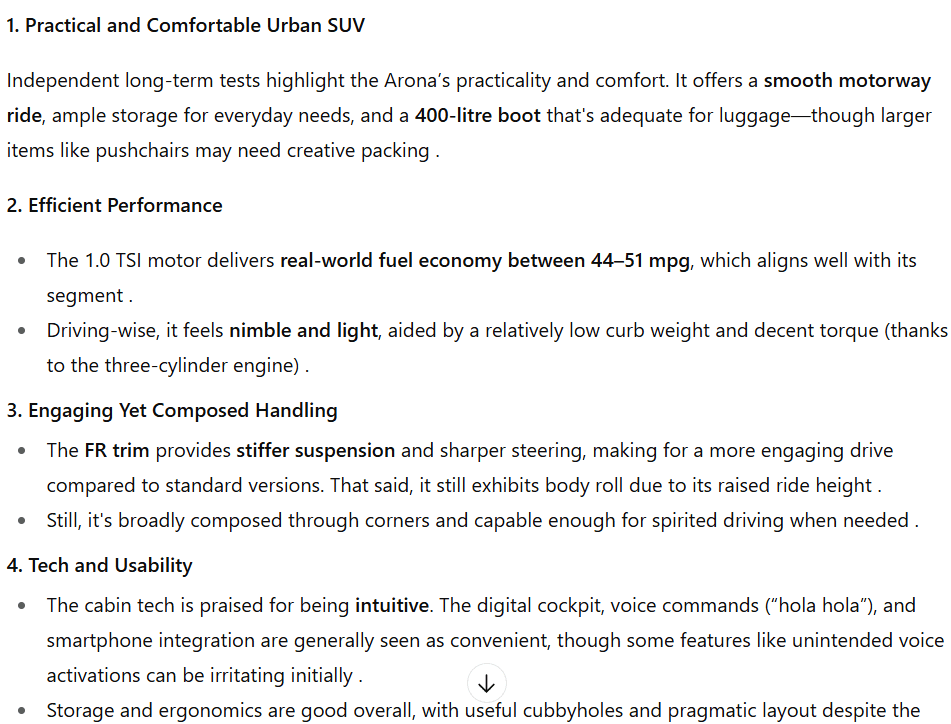AI Photo Prompting: Using Visual Evidence to Buy Cars with Confidence
AI Photo Prompting: Using Visual Evidence to Buy Cars with Confidence
This is the second post in my AI Photo Prompting series, where I share how taking photos and asking ChatGPT to analyse them often works better than writing detailed text prompts. In my first post, I shared how photo prompting helped me cut my electricity bill by €140/month. Today I want to share how this same methodology helped me buy a car with complete confidence in Spain.
This is the second entry in my AI Photo Prompting series. In my first post, I shared how photo prompting helped me cut my electricity bill by €140/month through compound problem-solving. Today I want to share how this same methodology helped me buy a car with complete confidence in Spain.
Getting around Spain meant we needed our own car. We’d been renting since the move, but costs were mounting, and once our residency documents came through, buying became the logical step. But car shopping in a foreign country meant navigating unfamiliar models, local pricing, and specifications in Spanish. The kind of complex decision where having real-time analysis would make all the difference.
Riding high from my success using ChatGPT to decode our electricity bill, I decided to take AI car shopping with me.
My wife speaks fluent Spanish, so she could handle the actual conversations while I became the research department. My strategy was simple: photograph everything and get real-time analysis from ChatGPT. What made this powerful was ChatGPT’s ability to reference our entire conversation history—I could build a running comparison of every car we’d seen, maintaining a top-five list that updated as we discovered new options.
Initially, I was disappointed. Taking photos of car badges expecting ChatGPT to magically produce a feature list didn’t work. But then it surprised me with a better suggestion: “Take photos of everything inside the car—dashboard, seats, steering wheel, handbrake, radio, front, back—pretty much everything, and then the wheels.”
So that’s exactly what I did. I sat in each car and systematically photographed every surface I could see: dashboard, front seats, back seats, radio controls, handbrake, gear stick, steering wheel controls. The ability to upload multiple photos at once was crucial here—I could capture an entire interior in one conversation.
Here’s what changed everything: I stopped writing detailed prompts. I’d simply upload 8-10 photos of a car with no text at all, and ChatGPT would automatically identify every feature, compare it to previous cars we’d seen, and provide analysis. No complex prompting required—just visual evidence.
The result was remarkable. Everything visible in the photos, ChatGPT listed as a feature. Climate control zones, seat adjustment options, safety features, infotainment systems—everything the salesperson might forget to mention or that I might miss entirely.
We were shown a Seat Arona FR for €22,000, which the salesman claimed was “brand new.” I was immediately wary—seemed too good to be true, and I’ve learned to be suspicious of sales tactics. When I uploaded the photos to ChatGPT, its analysis was eye-opening.
ChatGPT benchmarked the typical price at around €27,000, then explained why ours was cheaper: the garage had registered it, making it technically “used” despite having only 2km on the clock. This wasn’t a scam—it was legitimate savings. But here’s where ChatGPT got genuinely excited about the deal.
As I showed it more photos and details, ChatGPT became increasingly enthusiastic about what we’d found. It kept running comparisons and highlighting why this was exceptional value. When we looked at alternatives, ChatGPT’s analysis was consistent: 12-month-old used cars were only about €200 cheaper but had significantly fewer features. The €5,000 reduction on our “new” car meant much of the depreciation was already covered, so it would hold value better.
We also visited other dealers to look at Škodas and Volkswagens. Since Seats are essentially VWs with VW engines, it made sense to compare. What we found were older cars that were much more expensive. The process became almost mechanical: walk into dealer, photograph cars, upload photos with zero text, get instant analysis comparing features, pricing, and value against everything we’d already seen. ChatGPT would automatically reference our conversation history and tell me how each new car stacked up.
We even looked at specification sheets in Spanish. I’d photograph them and get instant translations with feature comparisons against models we’d already seen. This turned language barriers into advantages—I had better technical information than most Spanish-speaking buyers.
The data kept pointing back to the Seat. Most six-year-old VWs were the same price or more, and ChatGPT kept bringing me back to resale value and the fact that I didn’t want maintenance headaches.
ChatGPT excelled at managing complexity I couldn’t handle alone. It provided price benchmarking, depreciation analysis, feature comparisons between brands, and resale projections for our three-year timeline. Because I’d told it my requirements early on—family car, reasonable price, good resale potential, minimal maintenance—it could give me practical advice rather than generic information. I also had it translate all the documentation before I signed anything. No surprises, no hoping the salesperson was being honest about what I was agreeing to.
We bought the Seat. Not because a salesperson convinced us, but because the analysis confirmed it was genuinely the best option for our situation. Without ChatGPT’s real-time insights, I probably would have walked away from what seemed like a “too good to be true” offer.
Ten minutes of photo analysis replaced what would have been hours of online research, review reading, and forum browsing. More importantly, it gave me confidence in a high-stakes decision in an unfamiliar market—something traditional research methods could never have delivered.
This systematic approach—visual evidence, real-time analysis, objective comparison—is exactly how I help organisations make better technology and vendor decisions. When you’re evaluating complex options with multiple variables, having visual documentation and structured analysis transforms high-stakes choices from guesswork into confidence.
Sometimes the biggest decisions need the simplest tools.

